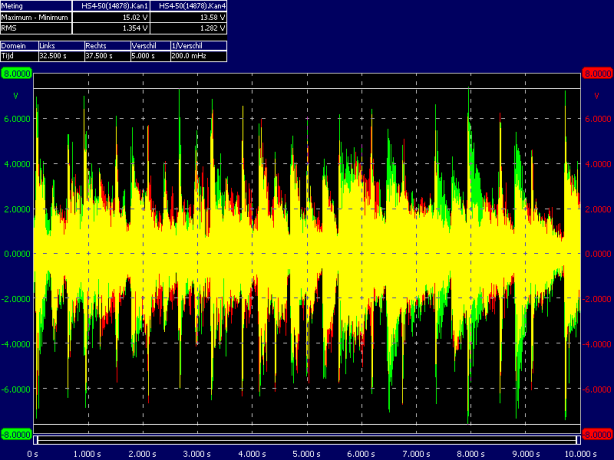I was not suggesting listening at those levels was harmless or even a good idea. Rather, I questioned whether it really was very loud independent of what one listens to.
For a little test of this, using HD600s, I tried listening to two different pieces of music at the same high level - around 100 dB SPL - aligned by track RMS. According to Sennheiser's specified sensitivity of 103 dB SPL at 0 dBV input, this would require around -3 dBV average level.
The first was 46:55 to 17:05 from the
wav download of
played through iTunes at full volume.
For the entire track, RMS is -12.35 dBFS and peak is 0 dBFS, so the amplifier's output was set such that 0 dB FS corresponds to about ~9 dBV giving an RMS SPL around 100 dB and peak SPL around 112 dB. However, for the section, RMS is -9.9 dBFS and peak is 0 dBFS, so RMS SPL is around 102 dB. This was already somewhat uncomfortable but I could listen to it for a while.
The second was 1:47 to 1:57 from
played through Tidal Hi-Fi and controlling volume through macOS. At full volume, the transmission is bit perfect.
For the entire track, RMS is -11.2 dBFS and peak is 0 dBFS, so the amplifier's output was set such that 0 dB FS corresponds to about ~6 dBV giving an RMS SPL around 98 dB and peak SPL around 109 dB. For the section, RMS is -11.0 dBFS and peak is 0 dBFS, so RMS SPL is also around 98 dB. This was really uncomfortably loud and I wanted to turn it down immediately (and did once I was done testing).
Also, according to YouTube (right click -> Stats for nerds), the loudness of the first piece is 3.8 dB higher than the second one (content loudness of 2.3 dB compared to 6.1 dB). Since the section used from the first track has about 2 dB higher RMS level than the entire track and the volume was set 2.5 dB higher, they should have been equally loud by this measure.
Equipment used: Sennheiser HD600, Sabaj Da2, MacBook Pro (Retina, 13-inch, Early 2015) running macOS 10.15.7.

